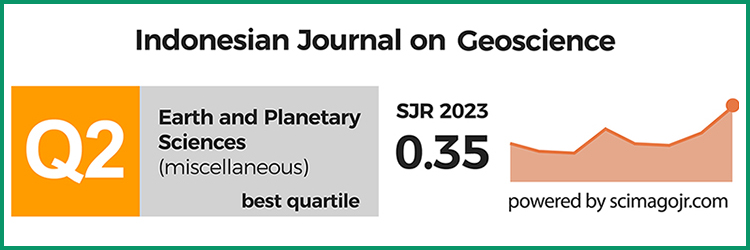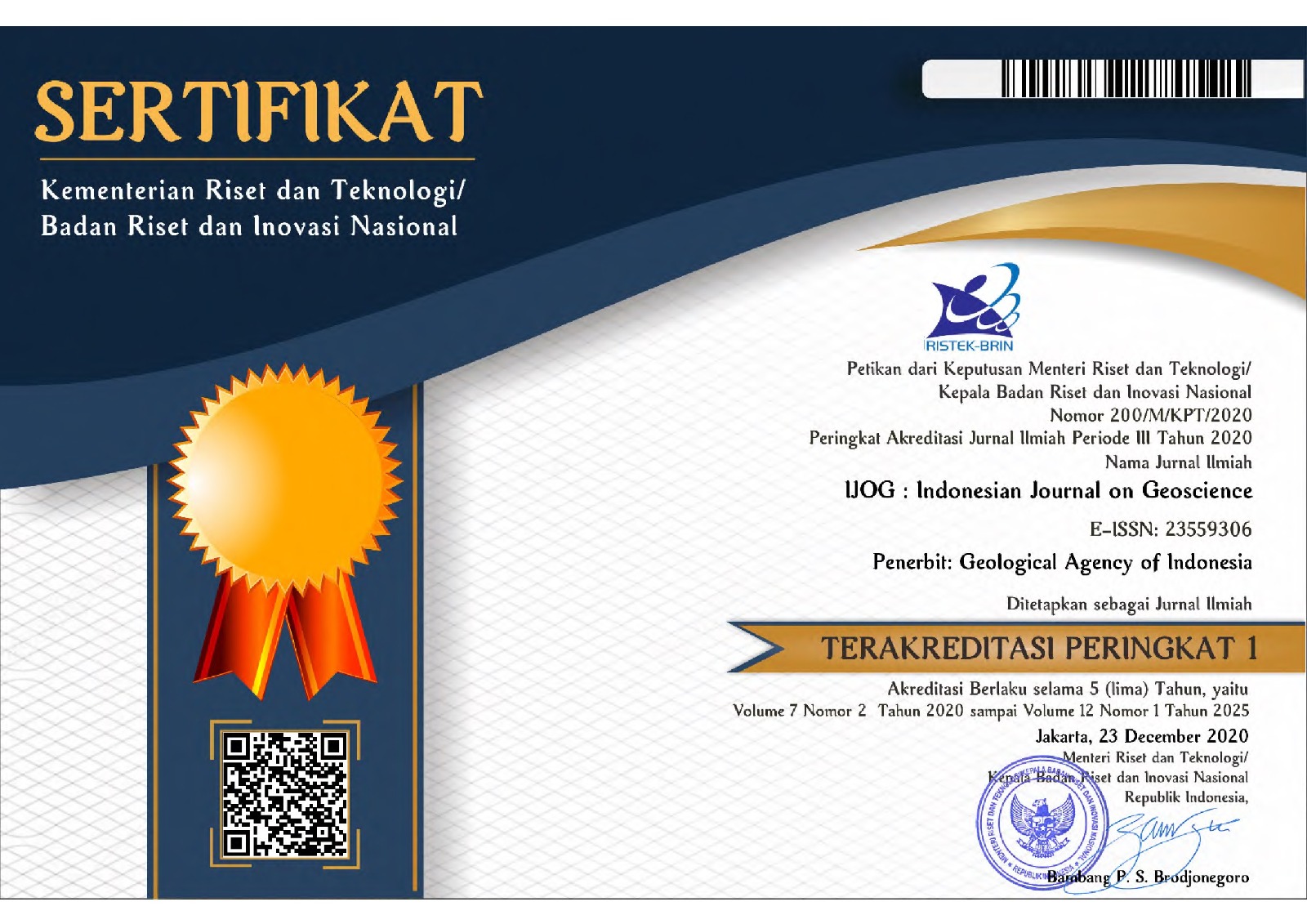Utilization of 222Radon and Stable Isotope for Investigating Potential Tailing Storage Leaks: A Case Study from Azurite Gold Mine, Central Kalimantan
DOI:
https://doi.org/10.17014/ijog.12.1.65-74Abstract
Azurite Gold Mine is an open pit project in Central Kalimantan which has produced mine tailings from the mining activities. There are various types of tailing storage facility (TSF) methods, e.g. dam tailing, landfill, and backfill to ex-mine void. Azurite Gold Mine stores their tailings in an inactive mine pit, named In-pit Seroja. The tailing placement into the inactive mine pit has less environmental impact compared to dam tailing as long as potential leakage of water-tailing into groundwater can be managed properly. The research objective is to investigate the potential tailing storage leaks into groundwater, and to determine contribution of waste dump at the northern part of In-pit tailing placement. 222Rn measurements and stable isotope analyses were performed for this work. Dissolved 222Rn from water samples has the concentration value between 1070 and 4940 Bq.m-3 indicating the existence of permeable zone around the In-Pit Seroja inactive mine pit. The high 222Rn concentration value is coexisting with the presence of faults, especially some intersection faults. Hydrogeochemical data shows that most groundwater is included to bicarbonate type except one groundwater sample near the waste dump is the sulphate type. Based on an isotopic analysis, the ratio of δ2H ranges from -132.55 to -6.268 ‰ for rainwater samples, -66.621 to -58.09 ‰ for groundwater samples, -97.092 to -48.43 ‰ for surface water samples, and -66.834 to -45.889 ‰ for water-tailing samples. The isotopic ratio δ18O ranges from -17.795 to -2.526 ‰ for rainwater samples, -10.164 to -8.93 ‰ for groundwater samples, -13.912 to -7.714 ‰ for surface water samples, and -9.352 to -2.864 ‰ for water-tailing samples. Water-tailing has different typical stable isotope composition compared to groundwater and surface water. Heavier δ18O and δ2H ratio indicates that water-tailing has already heated by intense evaporation process. Based on hydrogeochemical and stable isotope result, combined with groundwater flow analyses, it can be concluded that there is no leakage from water-tailing into groundwater and surface water around the area.



















